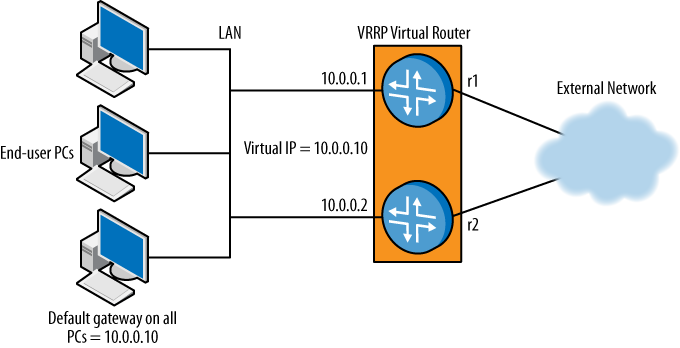Virtual Router Redundancy Protocol
The premise of high availability extends end to end in a network, right down to an end user’s workstation. A user’s PC is configured—statically—with a default gateway, making it a major exposure point in maintaining high availability. Even with multiple routers as exit points from the LAN, if the PC’s configured gateway fails, traffic has nowhere to go.
Virtual Router Redundancy Protocol (VRRP) is designed to specifically address this issue, as shown in Figure 14-3. All gateway routers essentially become a single virtual router, sharing a common “virtual” IP (and MAC) address. All hosts on the LAN still have a single static gateway address, but the address is virtual, meaning it never goes away. Thus, traffic always has a way out of the network.

Figure 14-3. Typical VRRP setup: multiple gateway routers acting as a single virtual router, and end-user PCs using the virtual address as their default gateway
Note
VRRP is typically implemented to provide high availability for Ethernet networks.
Of the VRRP-configured routers, one is always the master. This master router is the device that responds to and services traffic from inside the LAN destined for external networks. The other VRRP-configured routers act as backups. If the master fails, one of the backup routers takes over. This new master router takes over responding to and servicing traffic destined ...
Get JUNOS High Availability now with the O’Reilly learning platform.
O’Reilly members experience books, live events, courses curated by job role, and more from O’Reilly and nearly 200 top publishers.

